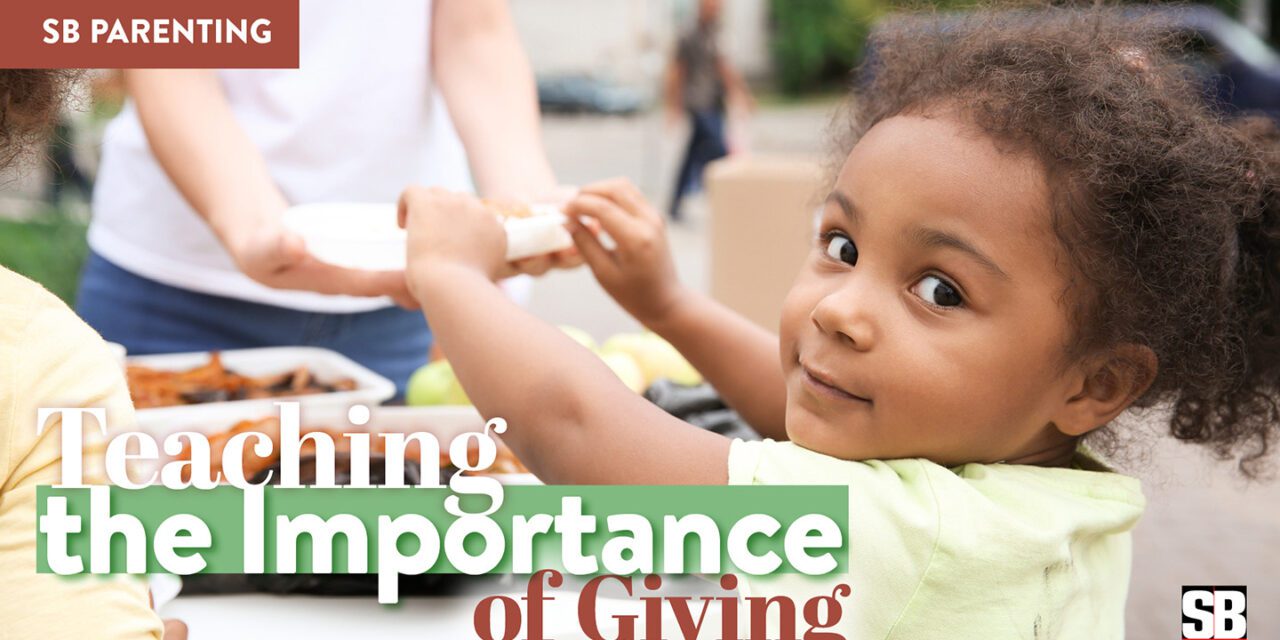BY URSULA BRANTLEY
Kids are never too young to learn the importance of giving to others. The earlier children learn about giving back, the more it becomes a part of who they are. For the most part, children enjoy helping others. Have you ever noticed when kids are small, they always want to be the big helper, or they don’t mind sharing their snack with a friend or sibling? Children can lose touch with their empathetic side if it’s not properly cultivated. That means it’s up to parents and guardians to show children the way when it comes to giving BACK and being a loving member of society.
In an article published by The Greater Good Science Center at the University of California-Berkeley, researcher Mark Ottoni-Wilhelm of Indiana University found that adolescents were 18% more likely to donate money to a charitable organization if their parents made any donation of their own in the past year. If a parent donated and talked with their child about giving, that child was 33% more likely to donate. Adolescents whose parents did volunteer work were 27% more likely to volunteer themselves and 47% more likely if their parents also talked with them about generosity.
Here are some great ways to get the giving ball rolling in your home:
1. Help children understand why they should give back
Kids don’t always want to do things unless they can understand why it’s important. They may think that they are too young to help or what they contribute isn’t big enough, but the truth is there’s no such thing as too small when it comes to giving. If they can see the problems and solutions through their worldview, then it will touch them more. The best way to get their mental wheels turning about the giving subject is by talking about it. Ask their point of view and then share your thoughts. Explain to them how those in need possibly became a person in need. Maybe they lost their job, became ill, or they had to escape an unsafe environment. The key is relatability. The next time you see someone in need, try having a brief conversation with that person instead of acting like you don’t see them. You will see that they aren’t much different than you are.
2. Help children see how their contributions and kindness impact those in need
When kids can see how happy they’ve made someone by giving, then they are more likely to keep giving. Small children don’t truly understand the impact of monetary donations, but they can see how a new pair of socks can put a smile on a person’s face. Tangible things like food, clothing, undergarments, bedding, toys, and toiletries are great things to let small children give to those in need so they can clearly see the impact it makes. As they grow, they can begin to understand how volunteering and monetary donations are just as important as toothbrushes and clothes.
3.Try integrating giving into children’s everyday life
In the previously mentioned Good Science article, Jill Gordon, director of the Youth Philanthropy Initiative of Indiana, said “Giving and serving, being philanthropic—it doesn’t need to be a separate part of your life. It can be part of your identity, part of the activities you’re already passionate about. If you’re into the arts, let’s find a way that you can use those talents. If you’re into sports, maybe you can organize a drive to give away sports equipment.”
4.Bring your kids along to do good
When you do volunteer work or charity work, bring your children along to witness it all. They will be able to see you do good as well as put a face to the help being given. They may see a child there around their age and realize that it’s not just grown-ups that are in need.









